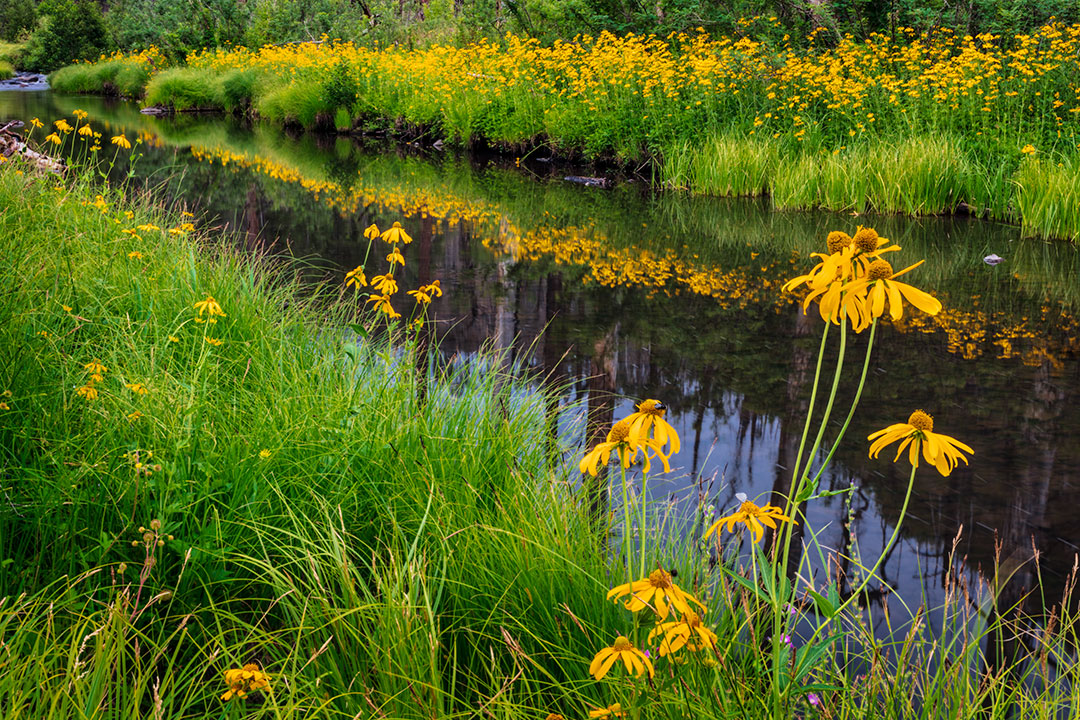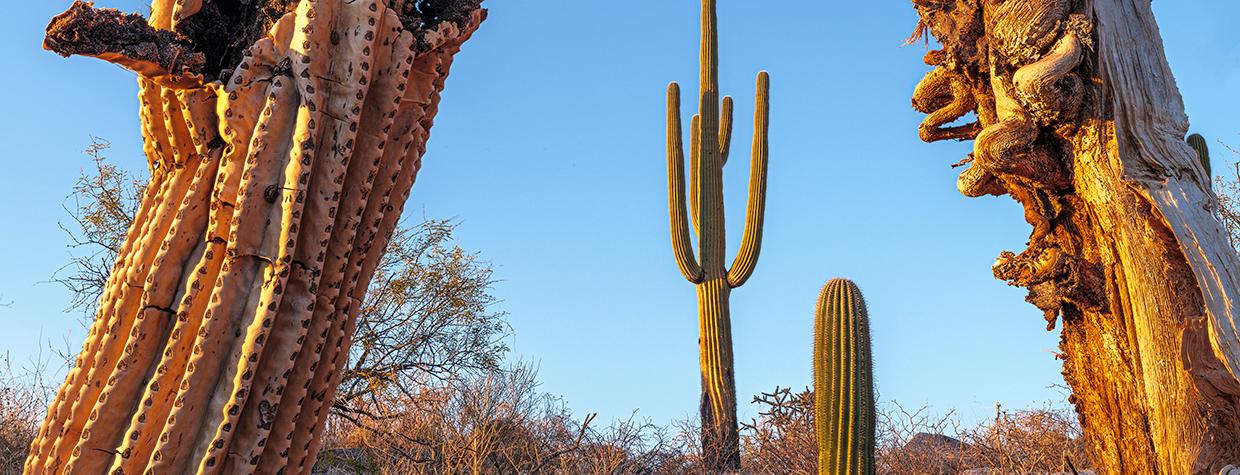It’s wildflower season in Arizona, and maybe you’re looking for a way to photograph a field of poppies and keep as many of them in focus as possible. There are a couple of routes that modern photographers take to carry sharpness and depth of field through an entire image. One is the use of a tilt-shift lens; the other is a technique called focus stacking. Each option has advantages and disadvantages, and understanding those can help you get the most out of your wildflower shooting.
You might have heard of tilt-shift lenses for their ability to make a landscape scene look “miniature,” but that’s an offshoot of these lenses’ intended purpose. As the name suggests, a tilt-shift lens is a lens in which the optics can be tilted or shifted in relation to the image sensor. In a normal lens, the plane of focus is parallel to the sensor, and being able to change that orientation allows you to extend that focus farther out into the landscape, as in the photo shown above. You can also set and level your camera on a tripod, then use the shift function to make a series of exposures to combine into a panorama later.
In focus stacking (above), the photographer makes multiple exposures of the same scene at different focal points, then combines the images using a program such as Adobe Photoshop or Lightroom. This technique offers some advantages over tilt-shift lenses, which are quite expensive. It can be done with any lens, and with software that many photographers already own. Where focus stacking falls short, though, is when there’s any movement in the scene due to wind or other factors. Making all those exposures can take a long time, too.

Claire Curran, a frequent Arizona Highways contributor, has four of Canon’s tilt-shift lenses and says she uses them all the time. “They’re great for when focus stacking is not an option, such as flowers in the wind, anything moving, and fleeting scenes such as storms or fast-moving clouds,” she says. But Claire, who has experience with large-format cameras, says even tilt-shift lenses don’t measure up to what a 4x5 camera can do. “A large-format camera’s swings and tilts have a far greater range of movement,” she says, “and fine-tuning the tilt-shift lenses is more difficult and time-consuming.”
If you’re looking to boost the depth of field in your images, there are numerous online resources that will help you get the hang of tilt-shift lenses, focus stacking or even large-format cameras. First, though, ask yourself what you want to accomplish. I’m a huge proponent of “reverse engineering” your photos. Get an idea of what you want your images to look like, then work backward to figure out how you want to do it. And if you’re still unsure, try renting a tilt-shift lens and playing with it before you make a big investment. Eventually, you’ll find the technique you need to make your wildflower photos crisp and clear.
Do you have a question about photography? Email it to [email protected], and our photo editor, Jeff Kida, will try to answer it in a future issue.

